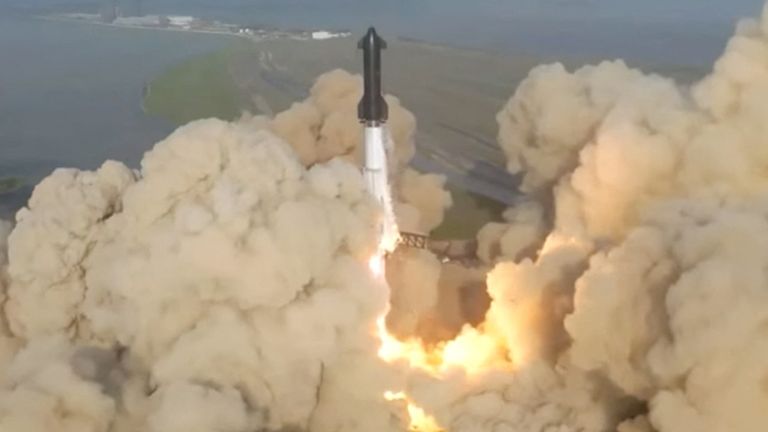Top Stories
Breaking: Elon Musk’s SpaceX Starship rocket blows up minutes after launch
Breaking: Elon Musk’s SpaceX Starship rocket blows up minutes after launch

The largest and most powerful rocket ever built has blasted off from Texas but blew up within minutes in a test flight that its makers, SpaceX, hope will be the first step on a human journey to Mars.
After a cancelled launch earlier this week because of a pressurisation issue, the 120-metre Starship rocket system took off at 8.33am local time (2.33pm in the UK) on Thursday. It gathered speed, but then started to spin at altitude before exploding about four minutes after leaving the ground.
It appeared that the two sections of the rocket system – the booster and cruise vessel – were unable to separate properly after takeoff, possibly causing the spacecraft to fail. It was not immediately clear whether the rocket exploded spontaneously or if the Flight Termination System was activated – a failsafe that destroys the spacecraft to prevent it from veering too far off course.
SpaceX had previously cautioned that the chances of success were low and that the aim of the test flight was to gather data, regardless of whether the full mission was achieved. Employees at SpaceX cheered even after the rocket disintegrated.
“As if the flight test was not exciting enough, Starship experienced a rapid unscheduled disassembly before stage separation,” SpaceX said in a statement on Twitter, referring to the explosion.
The uncrewed sub-orbital test marked the first “fully stacked” trial in which the Starship cruise vessel – which is designed to eventually carry up to 100 astronauts – was placed on top of the Super Heavy booster rocket, whose 33 Raptor engines provided the immense thrust needed.
Almost as long as three passenger jets, the mammoth spacecraft stands 10 metres taller than the Saturn V rocket that sent humans to the moon in 1969.
Elon Musk, the founder of SpaceX, gained the necessary approval last week from the Federal Aviation Administration for the launch to go ahead.


 Top Stories12 hours ago
Top Stories12 hours agoWe will no longer allow obstruction of our operations after Ododo interfered in Yahaya Bello’s attempted arrest – EFCC

 News11 hours ago
News11 hours agoIyalode Line Visits Olubadan Designate

 News10 hours ago
News10 hours agoBlack Market Dollar (USD) To Naira (NGN) Exchange Rate Today 18th April 2024

 Top Stories12 hours ago
Top Stories12 hours agoEFCC: Why Yahaya Bello Can’t Evade Arrest, Prosecution — Falana

 Top Stories6 hours ago
Top Stories6 hours agoBreaking: Police Apologizes Over Reports Of DJ Switch’s Arrest

 Politics12 hours ago
Politics12 hours agoFIRS Chairman Releases Statement As Tinubu Inaugurates National Single Window Committee

 News5 hours ago
News5 hours agoHeritage Bank In Crisis…Shut Down Over Mass Sack, Undue Process

 Entertainment12 hours ago
Entertainment12 hours agoBobrisky Reportedly Moved From Ikoyi To Kirkiri Prison






